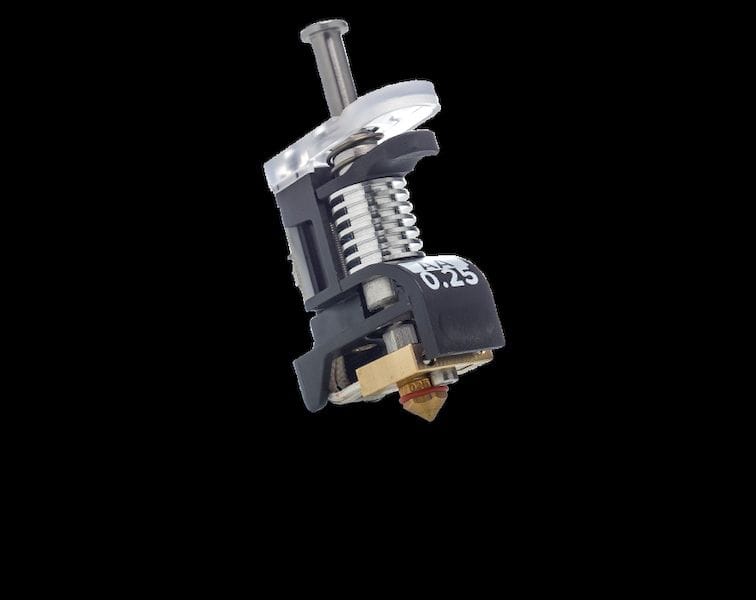
Ultimaker announced two new products that are designed to meet customer demands.
The first product is “Breakaway”, a support material that differs considerably from their previous PVA dissolvable support material.
Breakaway, as the name implies, is designed to be “broken away” manually, instead of dissolving in fluid. It is not water soluble.
You might think this is a disadvantage, because water soluble support processing is so easy: just dunk your completed print in a tub of water and wait for it to dissolve away while you can do something else.
But that’s the problem in some cases: waiting. What if you needed to get the part done quickly? Dissolving takes time, sometimes hours. The solution from Ultimaker was to create a completely different support material that does not dissolve, but instead is pulled away from the print by hand. And this can be done very quickly.
Breakaway is designed to leave no marks on the print, unlike same-material support approaches where you end up with many “buds” where support had been attached. Ultimaker says Breakaway is best used for “Ultimaker ABS, PLA, Nylon, CPE, and CPE+” materials, but I assume it will work quite well on alternative materials too.
There is a challenge, however. Breakaway supports cannot be used for each and every 3D model because there are some geometries that might capture the support material inside of a structure, where it cannot be removed, or at least removed easily. This defeats the purpose of Breakaway.
The result of this is something quite new: you must CHOOSE which support material is most appropriate for a given 3D print job. If you require speed and have a simple geometry, then use Breakaway; if you aren’t in a hurry and/or have a complex 3D model, then use the dissolvable support material.
When in doubt, just use the dissolvable and take the delay.
I’m imagining Ultimaker received comments from certain users of the dissolvable support material expressing a desire for a solution to make things move more quickly in some situations. It’s good to know that Ultimaker listened and resolve the concern.
The second announcement from Ultimaker deals with a new print core, which is their new name for the swappable hot end system in the Ultimaker 3 machines. The new core includes a 0.25mm nozzle diameter, smaller than the standard 0.4mm nozzle most often found on desktop 3D printers and the other Ultimakers.
The need for a smaller nozzle is obvious; you can print with much finer details. This should enable Ultimaker 3 operators to 3D print objects with thinner walls, more delicate structures, and with higher resolution.
While not everyone needs extra detail, there are some 3D printer operators who do. I suspect this demand is coming from some of Ultimaker’s new industrial clients, such as dental mold makers, who obviously could benefit from higher resolutions.
A 0.25mm nozzle is not new, even for Ultimaker, but it is new on the Ultimaker 3, which has a different hot end system than prior equipment. But now it seems their entire line can make use of higher resolution nozzles.
Via Ultimaker

